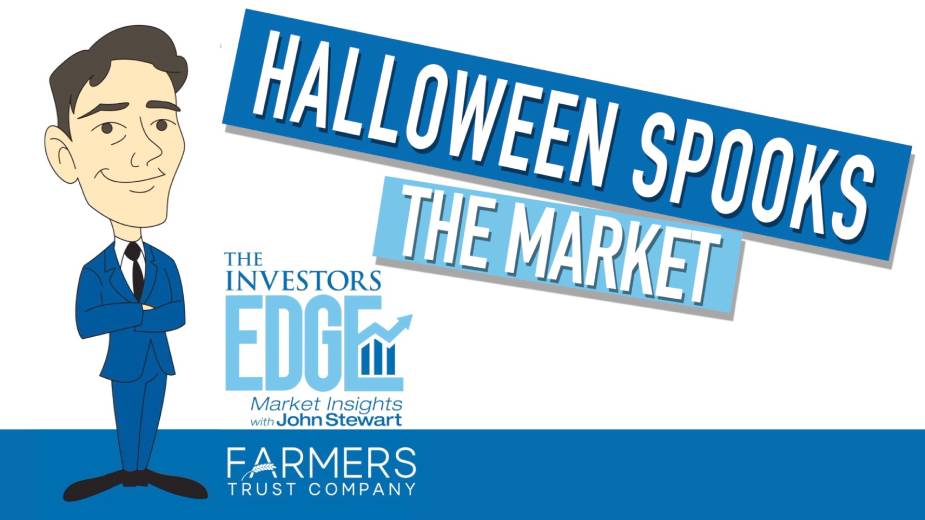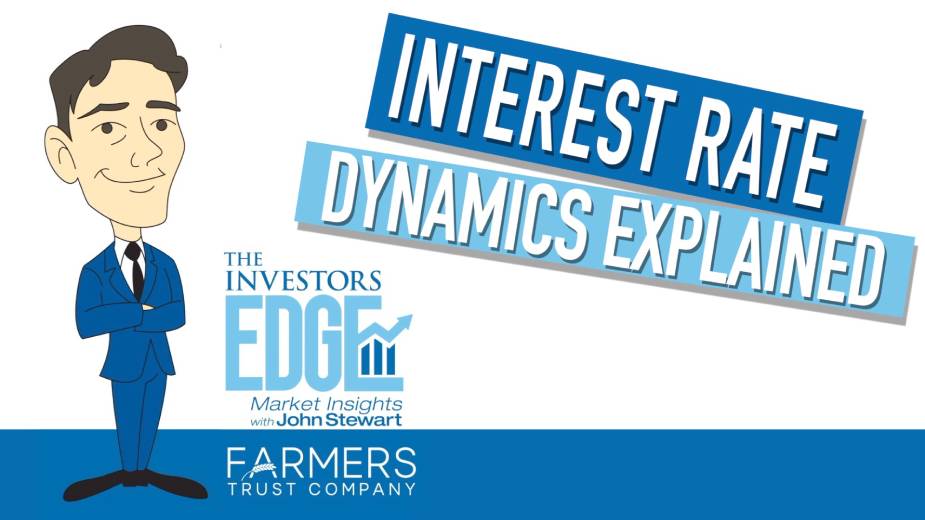Credit Tells A Story | The Investors Edge
By John Stewart, chief investment officer at Farmers Trust Co.
Week in Review: Higher Rates Sends Investors Heading for Exits
Interest rates have been rising for the past 18 months, but longer-term interest rates took another leg higher this past week to levels not seen in more than 15 years.
The benchmark 10-year U.S. Treasury rate went over 4.6% after being as low as 3.3% just 5 months ago. That is a huge move in a short period of time.
Higher interest rates are now putting pressure on stock valuations. The S&P 500 index has now fallen more than 5% in just the past two weeks.
And while overall, the stock market is still showing decent returns year-to-date, there is a lot of damage under the surface.
Five out of eleven S&P 500 sectors have negative year-to-date returns and eight out of eleven have year-to-date returns of less than 3%. Meanwhile, the equal-weight S&P 500 index is roughly flat on the year, meaning the average stock has been stuck in the mud at best.
Buckle up for a bumpy ride, because things might get a bit worse before they get better.
Featured Insight: Credit Tells A Story
If you want to be a sophisticated investor, you better be paying attention to the credit market.
What is the credit market, you ask? Well, it’s basically the market for borrowing. In the corporate world, that means the bond market.
With interest rates rising in a heavily indebted economy, you’re beginning to see a lot of weakness in companies that may have bitten off more than they can chew.
If you’re wondering why a stock you bought is underperforming the market, it could be due to the fact that that company has poor credit – in other words, too much debt they could have trouble repaying.
In a stagflationary world, that is, a stagnant economy with higher than normal inflation, companies with debt problems are especially vulnerable. Instead, look for companies with low debt and little need for external capital to finance their operations.
Looking Ahead: October Buying Opportunity?
October is famous for market crashes, but a lot of the pullbacks that have occurred in the seasonally weak August and September months have created buying opportunities into what is typically the strongest time of year for the stock market – November through May.
Despite the potential for further downside, longer-term investors could have an opportunity to do some dollar cost averaging into stock over the coming weeks – that is, buy an equal amount at regular intervals over a predetermined time frame. Don’t worry about trying to catch a market bottom.
Stocks are down 6% in the past two months and are still 8% below their January 2022 peak. That doesn’t mean they can’t go lower, but 5 years from now, you’ll likely be happy with your decision to do some buying during periods of market volatility.
Copyright 2024 The Business Journal, Youngstown, Ohio.


